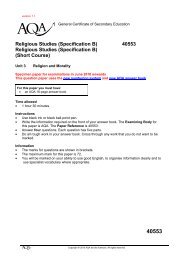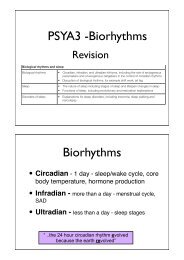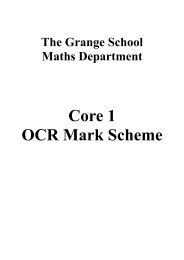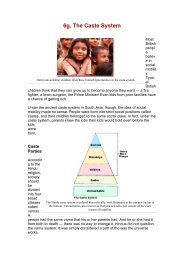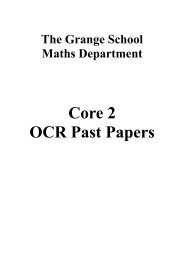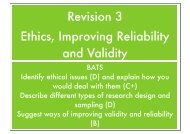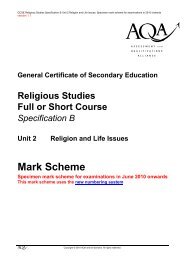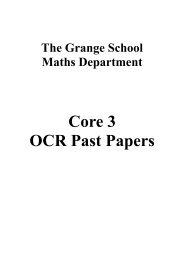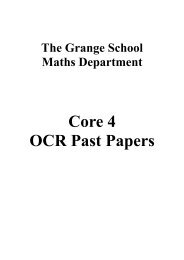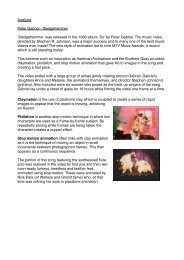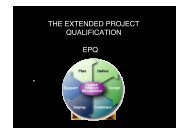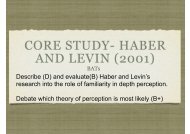Prob & Stats 2 OCR Past Papers - The Grange School Blogs
Prob & Stats 2 OCR Past Papers - The Grange School Blogs
Prob & Stats 2 OCR Past Papers - The Grange School Blogs
Create successful ePaper yourself
Turn your PDF publications into a flip-book with our unique Google optimized e-Paper software.
3<br />
June 2009<br />
7 <strong>The</strong> continuous random variable X has probability density function given by<br />
2<br />
x(3 − x) 0 ≤ x ≤ 3,<br />
f(x) = { 9<br />
0 otherwise.<br />
(i) Find the variance of X. [5]<br />
(ii) Show that the probability that a single observation of X lies between 0.0 and 0.5 is 2 27 . [2]<br />
(iii) 108 observations of X are obtained. Using a suitable approximation, find the probability that at<br />
least 10 of the observations lie between 0.0 and 0.5. [6]<br />
(iv) <strong>The</strong> mean of 108 observations of X is denoted by X. Write down the approximate distribution of<br />
X, giving the value(s) of any parameter(s). [3]<br />
8 In a large company the time taken for an employee to carry out a certain task is a normally distributed<br />
random variable with mean 78.0 s and unknown variance. A new training scheme is introduced and<br />
after its introduction the times taken by a random sample of 120 employees are recorded. <strong>The</strong> mean<br />
time for the sample is 76.4 s and an unbiased estimate of the population variance is 68.9 s 2 .<br />
(i) Test, at the 1% significance level, whether the mean time taken for the task has changed. [7]<br />
(ii) It is required to redesign the test so that the probability of making a Type I error is less than 0.01<br />
when the sample mean is 77.0 s. Calculate an estimate of the smallest sample size needed, and<br />
explain why your answer is only an estimate. [4]<br />
© <strong>OCR</strong> 2009 4733 Jun09



